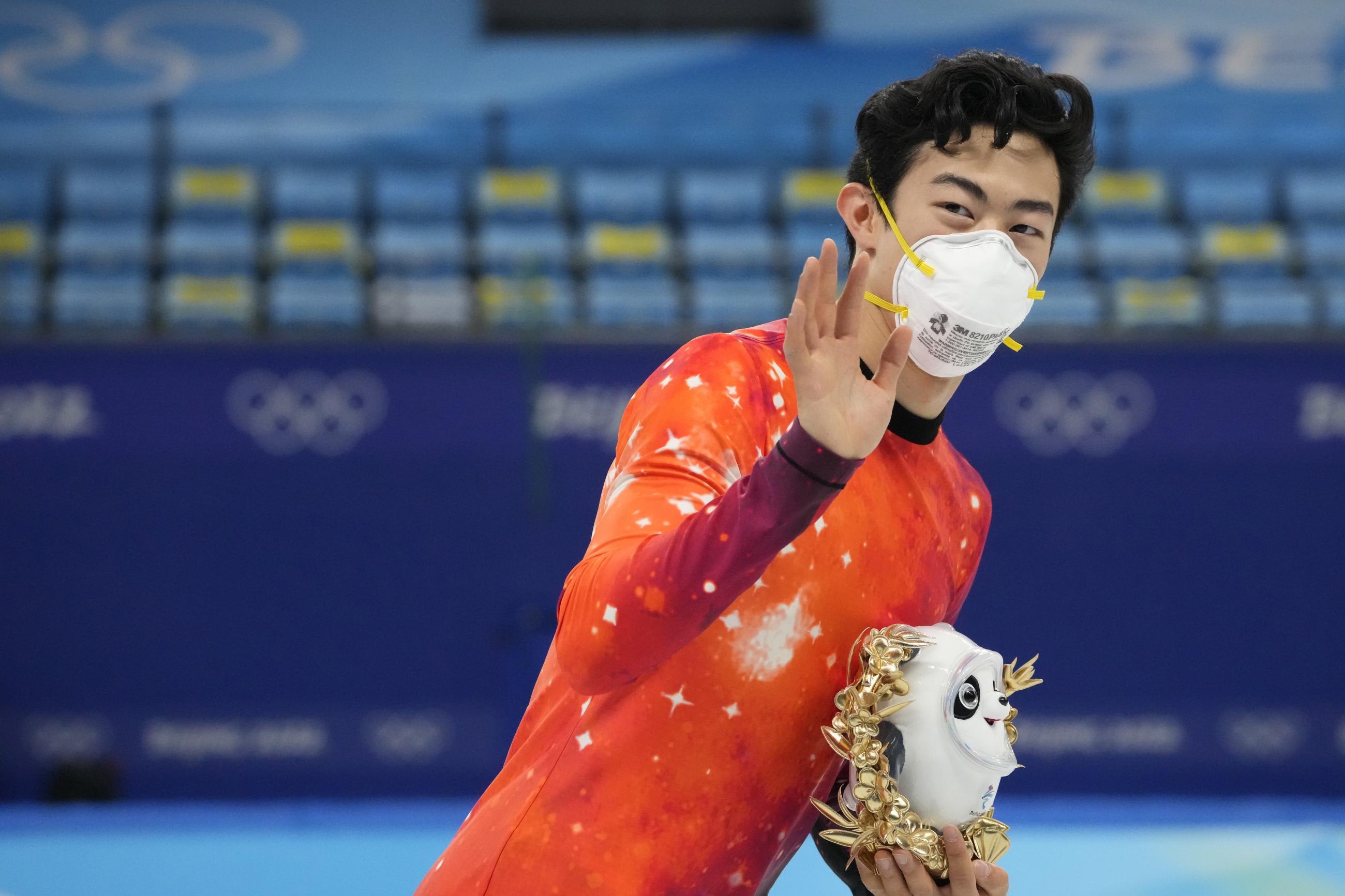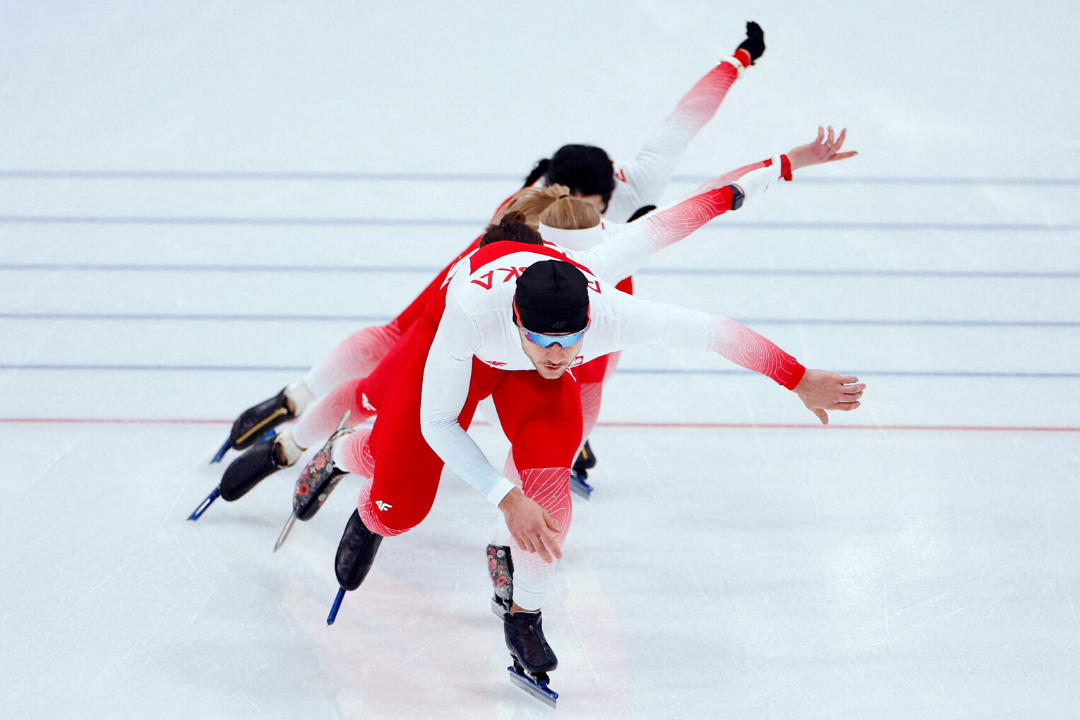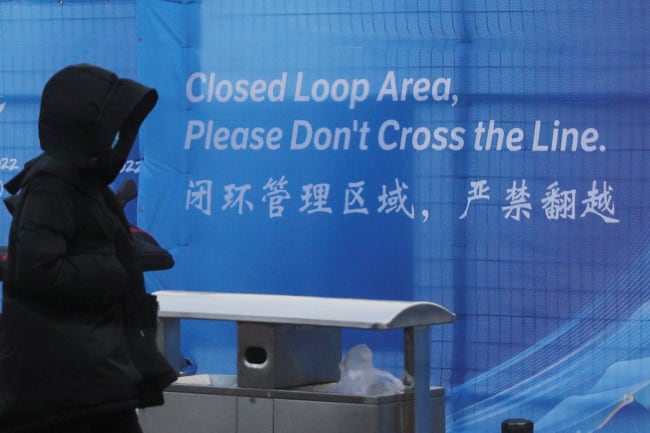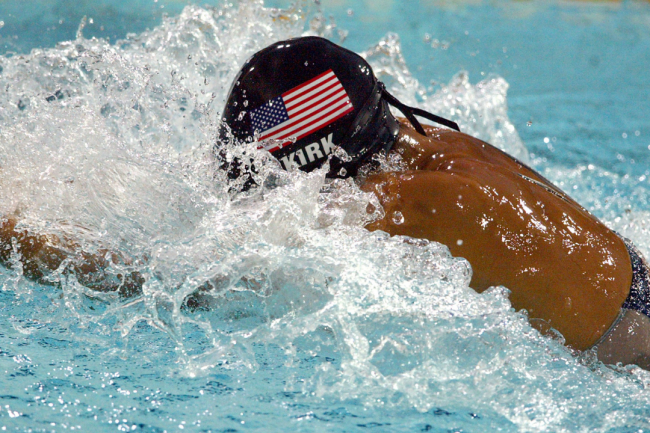The Olympic Winter Games are in full swing in Beijing. We checked in with Brian McCloskey, chair of the Beijing 2022 Medical Expert Panel, to hear how efforts to keep athletes, coaches, staff, and other participants COVID-free are evolving.
□ □ □ □ □ □ □ □ □ □ □ □ □
Think Global Health: How are you doing, how are things in Beijing?
Brian McCloskey: By and large, the Games are going well and the COVID precautions and measures we have in place are working, and the testing system is working. We just passed 900,000 tests (as of Feb 7, 2022) on everybody who is in the "closed loop," as we call it. We're seeing very low numbers of positive cases. The airport testing versus the closed loop testing is slightly more, but the closed loop testing is no more than 0.1 [positive cases], which is what we would expect.

Think Global Health: How does COVID-19 testing work for the athletes and others?
Brian McCloskey: Essentially, there are three layers of testing to get into the closed loop in Beijing. The first is predeparture testing. Everybody has to have two negative tests before they leave their home country—both PCR tests—one of which has to be laboratory approved by the Chinese authorities. Then when you get to the airport in Beijing, you have a further PCR test with both nasopharyngeal and oropharyngeal swabs. And if that is negative, you get into the closed loop system. We don't call it a bubble because you can't have a bubble for thousands of people across multiple venues. Everybody within the closed loop system—whether its local workforce or international participants—everybody is tested with a PCR test every day.
Think Global Health: How are the athletes dealing with it? Are they being collaborative?
Brian McCloskey: They are. Actually, when you talk to the people who come in, most people say getting to Beijing is scary—international travel is scary for everybody right now. But the process—having to have all of the apps for your health monitoring for fourteen days, your test results, the QR codes you have to get off of the apps to get through the health monitoring—all of that and then the airport testing is stressful, and people find it quite difficult. But once they get into the closed loop, what they tend to realize is that we are probably in one of the safest places on Earth at the moment from COVID-19. And they start to relax.
We are probably in one of the safest places on Earth at the moment from COVID-19
Getting a test every morning is not a big deal in terms of having your throat swab done. There's obviously a low level of anxiety every time you get a test about what the result might be, but most people are finding that it's comforting. That the precautions will make a difference.
Think Global Health: Once people are in the closed loop, what types of health measures are in place on the inside? Is everyone still wearing masks all of the time?
Brian McCloskey: Absolutely. FFP2 and N95 masks are compulsory everywhere, apart from when you are in a room on your own. We have all of the standard World Health Organization (WHO) guidance, public health, and social measures in place: social distancing, mask wearing, hand hygiene, and good ventilation. On top of that, we have well over 95 percent vaccination rates across international participants. So, we have the full package of public health measures.
What we learned in Tokyo, and it's happening here again, is you have to do everything. As Dr. Tedros, the WHO Director-General, keeps saying, it's not just about vaccination, it's about vaccination and the whole package. When you walk around the closed loop, everybody you meet is wearing an N95 mask, has tested negative in the last 24 hours, and is vaccinated. That makes people feel safe.

Think Global Health: Have any COVID-19 cases cropped up within the closed loop?
Brian McCloskey: At the moment we don't have evidence of any spread within the closed loop.
The reality is that most of the countries who send teams to the Winter Olympics—primarily North America, Canada, Europe, Australia, New Zealand—are all countries, apart from New Zealand possibly, who already have a very high level of COVID, mostly omicron. They are coming from a high-risk area to a low-risk area, so the real challenge is making sure we don't spread it into the village and from there into the Chinese population. And that's why the closed loop is so important.
Think Global Health: Can the athletes socialize with each other?
Brian McCloskey: Most athletes are living in the village. When you are in the village, you can go out and eat in the village restaurant, the main dining hall. You can socialize with other athletes from other teams in different flats. You can't leave the village except to go in designated transport to your training venue or your competition venue.
I can move around in the hotels that are here in Beijing, and from there, into the village and into the competition venues, but I can't go anywhere else outside of the closed loop.
Think Global Health: What about the staff?
Brian McCloskey: Inside the closed loop, there are local staff and all staff are tested every day and they are all vaccinated. The issue for the local staff is that they have to quarantine for up 21 days before they can go home to their families at the end of the Games, and that's quite a sacrifice.
Think Global Health: For athletes who test positive when they get to the front door in Beijing, will they be able to participate?
Brian McCloskey: Potentially. They'll first go into isolation. Essentially, if you go into isolation, you can be released from isolation if you have two negative PCR tests on two separate days. But then you go into what we call "the close contact protocol," which means you are restricted. You have to eat alone, you travel in a car alone, you train on your own as far as is possible. And if you do a team sport, you train in a way that keeps you distanced from other people apart from your immediate team. There are protocols to keep you from engaging in the locker room, for example. And that lasts for seven days after you come out of isolation. During those seven days, you are tested twice a day and if you get through the seven days with no positive tests then you're back to the closed loop. You can do what you'd like within the closed loop but you are tested every day until you go home.
Think Global Health: How does all of this background noise from COVID impact athletes' ultimate performances and mental health?
Brian McCloskey: It's hard to know but looking back at Tokyo, there were probably as many Olympic and world records as we would normally expect to see at the Games. People's performance didn't seem to be particularly affected.
We do know from Tokyo that people in isolation—athletes, officials, and others—did suffer from anxiety and stress. We did have a mental health program in Tokyo that has been considerably expanded in Beijing and provides support and counseling to people in isolation, and people all around the closed loop. You can access, through your phone, counselors in 70 different languages who are master's level trained counseling support workers. And a lot of the bigger teams bring their own psychologists with them. Being in an isolation hotel here is not ideal if you've come here to compete. Sitting in your room is not great so we're doing what we can to support athletes, making sure they get the right meals and where possible, we bring in sports equipment so at least they can train in the room. But it's not ideal. Nothing is ideal in this pandemic.
Mental health counselors are available to athletes in 70 different languages
Think Global Health: How has it been collaborating with Beijing officials?
Brian McCloskey: I've been involved in the planning since March 2020 when we decided to postpone the Tokyo Games. I was involved in designing the countermeasures for Tokyo, then we adopted them to the specific context of China. I chair the Medical Expert Panel which is a group of people who are virologists, public health doctors, infectious disease experts, a mixture of experts from within Beijing and China, and a group of international experts from countries around the world. We've been meeting online for some months to try to agree on all of the protocols and how we would respond to the different results that might come out of the testing program. We've been sharing information from medical journals for particular issues. For example, continuing positivity. After you've had COVID, you can continue to test positive for weeks and months afterward. That's an issue here because if you test positive, is that because you had COVID two months ago or is it because you've got COVID now and you're infectious? Agreeing on a protocol of how we would manage that has been going on for a long time. We still meet daily to talk about complicated cases. So, an athlete who has a history of COVID and now tests positively, can he be allowed to train or does he need to go into isolation? All of that has been done in a very collaborative way and it has been good. Some of the people here, I know from previous work with China's CDC. We have been working quite closely together for many months.
Think Global Health: What can governments and leaders learn from you—from the Olympic leadership's management of COVID-19?
Brian McCloskey: I think there is one very clear message which definitely occurred in Tokyo and is emerging from Beijing now. Essentially it is a message for the world: We will get over this pandemic. We know how to control it and we'll get out of it. We can do it in the way the WHO has been advising for the past two years, which is the whole package of public health measures plus the technology—test, track, and trace, and vaccination. We know it works. We've proved it works and we can get out of this, even with omicron.













